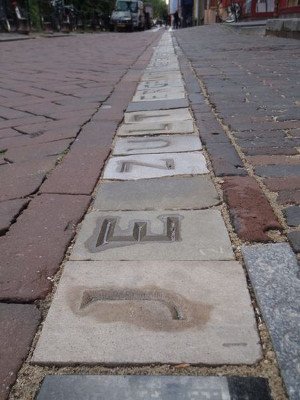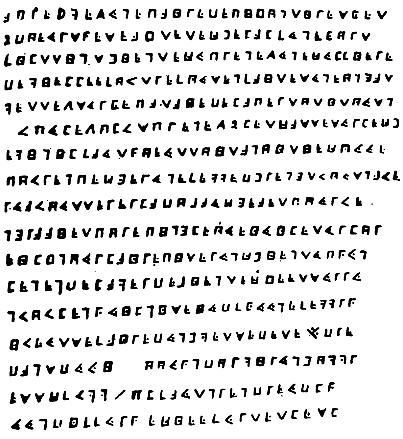
Utrecht contains a poem. Each Saturday at 1 p.m. a letter is hewn into another cobblestone in a line along a central thoroughfare:
You have to begin somewhere to give the past its place, the present matters ever less. The further you are, the better. Continue now, leave your footprints. Forget the flash, in which you may exist, the world is your map.
Written by a succession of poets from the city’s poetry guild, the poem grows by about 5 meters a year, and it takes about 3 years to publish a sentence.
As a theme and as an undertaking, the project appeals specifically to the passing of time and the benefit of future generations. Its creators have linked it explicitly to the 10,000-year clock being built in Texas’ Sierra Diablo Mountain Range and the 7,000 oak trees planted in Kassel, Germany, by artist Joseph Beuys. Each cobblestone is sponsored by a citizen, often to commemorate a milestone such as a birthday, anniversary, or marriage.
If the funding continues, the poem will grow forever. In time the line of cobblestones will itself describe a U and a T in the city’s center, and the residents in that time (the year 2350) can decide where it goes after that.





